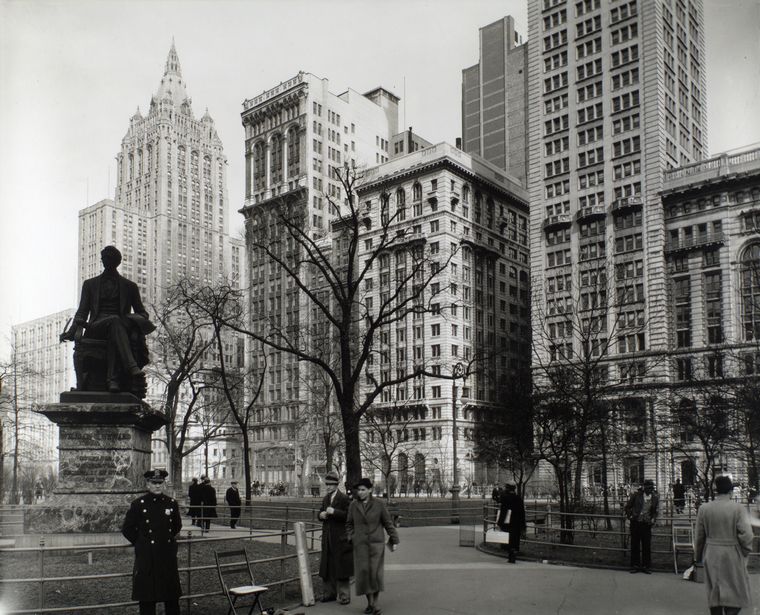Things tagged docu:
What Should Medicine Do When It Can’t Save You?
There are two things I care passionately about, and believe american culture (western culture generally) have wrong; education, and death. Here is a great piece on the latter. This is not something we can fix through legislation. (see: Death councils). It will have to be a cultural shift.
Atul Gawande in The New Yorker:
A few days before Thanksgiving, she had another CT scan, which showed that the pemetrexed—her third drug regimen—wasn’t working, either. The lung cancer had spread: from the left chest to the right; to the liver; to the lining of her abdomen; and to her spine. Time was running out.
This is the moment in Sara’s story that poses a fundamental question for everyone living in the era of modern medicine: What do we want Sara and her doctors to do now? Or, to put it another way, if you were the one who had metastatic cancer—or, for that matter, a similarly advanced case of emphysema or congestive heart failure—what would you want your doctors to do?
The issue has become pressing, in recent years, for reasons of expense. The soaring cost of health care is the greatest threat to the country’s long-term solvency, and the terminally ill account for a lot of it. Twenty-five per cent of all Medicare spending is for the five per cent of patients who are in their final year of life, and most of that money goes for care in their last couple of months which is of little apparent benefit.
And the hour long documentry on Frontline is here. Trailer for that:
30 for 30 Shorts: ‘The High Five’
Our latest film, from award-winning director Michael Jacobs, tells the story of a celebratory gesture and the tumultuous life of the man who made it happen
Sir Mix-a-Lot ‘Baby Got Back’ Video Oral History
America received the ultimate booty call on May 7, 1992, courtesy of Seattle rapper Sir Mix-a-Lot and his song “Baby Got Back.” Since its release through legendary rap-rock producer Rick Rubin’s Def American label, the up-tempo track — which spent five weeks at No. 1 and was the second-best-selling single of 1992, after Whitney Houston’s “I Will Always Love You” — has become our national anthem of ass, spawning innumerable parodies, cover versions (most notably Jonathan Coulton’s viral 2005 version), and references, including on Friends and in Shrek and Charlie’s Angels movies. The song’s long-lasting success owes greatly to its winking video, which, aside from featuring Sir Mix-a-Lot dancing atop a giant derrière and countless buttocks-related visual puns, generated a healthy amount of buzz when MTV banned it and fans, including Bruce Springsteen, countered that it offered a far more realistic glimpse at the female form than other music videos of the day. As part of our micro oral histories week, Vulture corralled Rubin, Sir Mix-a-Lot (real name: Anthony Ray), the video’s director Adam Bernstein (also of Breaking Bad fame), and others to bring you the story behind the behind-centric classic.
The Audience Has an Audience: Kevin Slavin & Kenyatta Cheese
Kevin Slavin and Kenyatta Cheese argue that people have “a fundamental feeling of wanting to be in sync with each other.”
Despacio soundsystem: James Murphy and 2ManyDJs in conversation
Ignore the vinyl-only bs, but the rest of what they have to say rings very true.
LIFT
Filmmaker Marc Isaacs sets himself up in a London tower block lift. The residents come to trust him and reveal the things that matter to them creating a humorous and moving portrait of a vertical community.
Terry Gilliam Interview | The Talks
Mr. Gilliam, you’ve been given the nickname “Captain Chaos” because of all the things that have gone wrong on your film sets. Do you need chaos on set to be creative?
(Laughs) It isn’t really that. I don’t want chaos, I actually want order. I really want it ordered very well and I want to surround myself with really well organized people so that when we’re on the set and an idea comes in we can play with it because we’ve got a really good structure. So it’s not chaos. Between me and the actors, or between me and the director of photography, it’s more like, “Oh, what if we did that? Okay, we can do that.” So the organized people think it’s chaos, but it’s not. I just build a structure that’s really solid so even if the lead actor dies, we can finish the film. (Laughs)
Rare mp3s of Weegee and Henri Cartier-Bresson talking about photography
Below you can hear Weegee talk about picture-making. It’s interesting to hear his voice, which is one of those accents you don’t hear so much in New York anymore: part Austro-Hungarian immigrant by way of the Lower East Side and part Elmer Fudd. Peter Sellers based his accent in Dr. Strangelove on Weegee’s voice after Weegee visited Kubrick’s set one day.
Via kottke.org.
The house that used to be there
From Marcus Buck, imprints of demolished houses left on other houses.
Via kottke.org.
Mirror, Mirror on the Wall
Errol Morris:
During the last week of the Bush administration, I asked the head photo editors of these news services — Vincent Amalvy (AFP), Santiago Lyon (AP) and Jim Bourg (Reuters) — to pick the photographs of the president that they believe captured the character of the man and of his administration.
Via Daring Fireball.
Changing New York
Included in the NYPL’s recent addition to the Flickr Commons project is Changing New York, a selection of photos taken of NYC in the 1930s by Berenice Abbott as part of a government program for unemployed artists.
Via kottke.org.
The World in His Mail Box: Eulogy for Tony Schwartz
Posted by Doug Schulkind to WFMU's Beware of the Blog.
Recorded sound had no greater friend than Tony Schwartz, the audio documentarian, advertising guru, media consultant, and exalted citizen of the aural universe, who passed away Saturday a few months shy of his 85th birthday. He'll be forever linked to his best-known work—the infamous "Daisy" ad from Lyndon Johnson's 1964 re-election campaign—but to many, Schwartz is beloved for sharing with the world his lifelong infatuation with the musicality of prosaic sounds.
And Doug posted some great clips from his albums, go listen.
After 122 Years, The Last Calf Is Sold
Beautiful "audio slide show" (need a better name for that) about the closing of the South St. Paul stockyards.
If you want more of the back-story, the news article is here.


